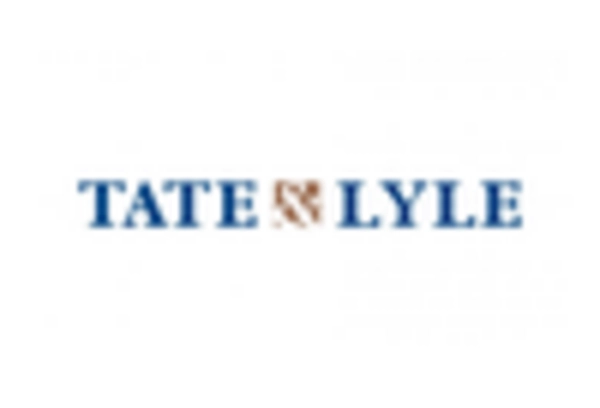Regulatory Framework and Trade Policies
The regulatory environment surrounding the industrial sugar market plays a crucial role in shaping market dynamics. In the US, government policies regarding sugar tariffs and import quotas can significantly impact domestic prices and availability. For instance, the US Department of Agriculture (USDA) has established various programs to support sugar producers, which may influence market stability. Additionally, trade agreements and negotiations can alter the competitive landscape, affecting both domestic and imported sugar prices. The industrial sugar market is likely to experience fluctuations based on these regulatory changes, as they can either protect local producers or open the market to international competition. Consequently, stakeholders must remain vigilant regarding policy developments that could impact their operations and profitability within the industrial sugar market.
Growth of Biofuels and Ethanol Production
The increasing focus on renewable energy sources is driving the industrial sugar market, particularly through the growth of biofuels and ethanol production. In the US, sugarcane and sugar beet are significant feedstocks for ethanol, with the Renewable Fuel Standard promoting the use of biofuels. As the demand for cleaner energy alternatives rises, the industrial sugar market may benefit from the diversion of sugar towards ethanol production.. Reports suggest that the ethanol market could expand by approximately 5% annually, which may lead to a corresponding increase in sugar demand. This trend not only supports the industrial sugar market but also aligns with broader sustainability goals, as biofuels are seen as a viable solution to reduce greenhouse gas emissions. Thus, the interplay between energy policies and sugar production is expected to shape the future landscape of the industrial sugar market.
Rising Demand from Food and Beverage Sector
The food and beverage sector is a primary driver of the industrial sugar market. In the US, this sector accounts for a substantial portion of sugar consumption, with estimates indicating that around 70% of sugar produced is utilized in food and beverage applications. The increasing trend towards processed foods, soft drinks, and confectionery items contributes to this demand. As consumer preferences evolve, manufacturers are likely to seek higher-quality sugar products, which may lead to increased competition among suppliers. This dynamic could potentially elevate prices and influence market strategies within the industrial sugar market. Furthermore, the ongoing expansion of the food service industry, including restaurants and catering services, is expected to further bolster sugar consumption, thereby enhancing the overall growth prospects of the industrial sugar market.
Emerging Health Trends and Sugar Alternatives
The rising awareness of health issues related to sugar consumption is influencing the industrial sugar market. As consumers become more health-conscious, there is a growing trend towards sugar alternatives and low-calorie sweeteners. This shift may lead to a decline in traditional sugar demand, prompting manufacturers to adapt their product offerings. Reports indicate that the market for sugar substitutes is projected to grow at a CAGR of around 6% over the next few years. Consequently, the industrial sugar market may face challenges as it navigates this changing landscape. However, this trend also presents opportunities for innovation, as companies explore new formulations and product lines that cater to health-oriented consumers. The ability to respond to these emerging health trends will likely determine the competitive positioning of players within the industrial sugar market.
Technological Innovations in Sugar Processing
Technological advancements in sugar processing are transforming the industrial sugar market. Innovations such as improved extraction methods, refining techniques, and automation are enhancing efficiency and reducing production costs. For instance, the adoption of advanced filtration systems and enzymatic processes can increase sugar yield and quality. As a result, manufacturers are likely to invest in these technologies to remain competitive. The industrial sugar market may witness a shift towards more sustainable practices, as these innovations often lead to reduced waste and energy consumption. Furthermore, the integration of data analytics and IoT in production processes could optimize supply chain management, thereby improving responsiveness to market demands. Overall, the ongoing technological evolution is expected to play a pivotal role in shaping the operational landscape of the industrial sugar market.

















Leave a Comment